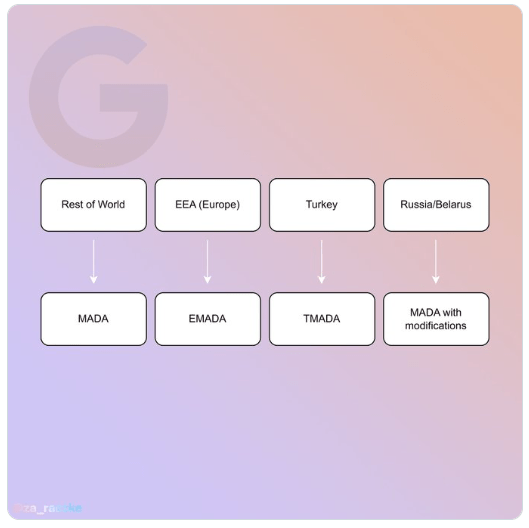Google introduced IMADA exclusively in India. IMADA stands for Indian Mobile Application Distribution Agreement which is different from the international standards that follow MADA (Mobile Application Distribution Agreement). Why did Google have to introduce a new agreement for India? Read On, to know more.
| IMADA: A guide detailing specific changes to differentiate Android devices sold in India from those sold elsewhere in the globe |
What Is A MADA Agreement?
Google’s MADA or Mobile Application Distribution Agreement, ensures that all mobile manufacturers using Android OS have to follow a certain set of rules predetermined by Google. These rules include the number of preinstalled Google apps among other conditions.
What Is IMADA Agreement And How It Is Different?
According to the standard agreement between Google and OEMs, eleven necessary Google applications must be installed. But all that IMADA needs is the Google Play Store. Manufacturers can preload any software from a third party. If they decide to integrate all 11 apps, Google offers a “per-app bounty.” A Google search bar, folder, or Play Store icon is not required by IMADA to be present on the home screen. Users in India will have the option of choosing their default search engine.

The Play Store and other necessary pre-installed elements like Play Services, which are required for APIs like notifications and location data, will be made mandatory by default. Other Google apps, however, will be optional. Manufacturers can decide whether or not to include particular apps in their products.
Why Did Google Introduce A New Agreement For India Alone?
The Indian Competition Commission has conducted a legal investigation into Google India (CCI). In markets like internet search and Android app stores, the business has been accused of exploiting its dominant position in the market. Months of issues have ultimately led to Google’s decision to abide by regional laws and regulations. Google claims to have informed the CCI of how it will abide by its orders and has made major adjustments to its platforms and business practices in India.
India, the second-largest smartphone market in the world after China, has a staggering 97 percent market share for Android, which translates to 600 million smartphones. After winning an antitrust lawsuit in India around three weeks ago, the Competition Commission of India (CCI) has issued new guidelines for how Google can combine Android with other Google services. In addition, the CCI fined Google $161 million, which is equivalent to roughly five hours’ worth of Alphabet’s $282 billion in annual revenue, or around 25 cents for each of India’s 600 million mobile phones.
Google India has updated Android and Google Play to comply with the CCI decision in response to an antitrust judgment. As part of these changes, OEMs will now be able to license particular Google apps for pre-installation on their products. The changes could significantly alter how Android handsets are used in India. The term “IMADA” refers to a document listing particular adjustments to set Indian Android smartphones apart from those in other countries.
What Are The Limitations Of The IMADA Agreement?

Indian producers have two agreements from which to choose. They won’t be able to sell the phones with the same software outside of India, though, if they opt for the IMADA agreement.
Manufacturers won’t have to adhere to Google’s standards when choosing which apps to put on their devices, giving them more latitude in their decision-making. Yet, it’s important to note that Google’s apps are still widely used, so many producers might still choose to incorporate them.
Are There Other Types Of MADAs In Existence?

It is not the first time that Google had to bow down to the requests of a particular Government and make modifications to MADA. While the rest of the World follows the standard MADA, the countries of the European continent follow EMADA which is specifically designed for the European nations. Other than that Russia and Belarus follow the MADA with a few modifications. Turkey and now India, are the only two nations that have a country-specific MADA.
Your Thoughts On Why Google Introduced IMADA?
Although, there are rumors that India’s decision is an exact replica of the decision taken by the European Union years ago. But whatever the case may be, the application of IMADA strengthens the Power of Choice of the people in India. Although India is not the first country to force Google to sign a customized MADA, this news will have a major impact on the rest of the world. It will force other countries to rethink their current MADA with Google and probably introduce changes in favor of the common public.
Please let us know in the comments below if you have any questions or recommendations. We would be delighted to provide you with a resolution. We frequently publish advice, tricks, and solutions to common tech-related problems. You can also find us on Facebook, Twitter, YouTube, Instagram, Flipboard, and Pinterest.


 Subscribe Now & Never Miss The Latest Tech Updates!
Subscribe Now & Never Miss The Latest Tech Updates!